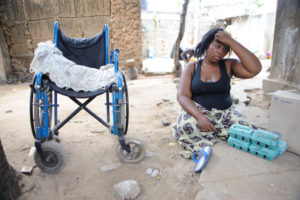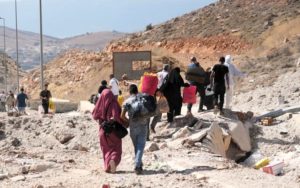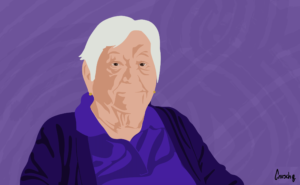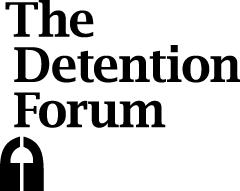
Introduction
In 2015-16, around a million refugees and asylum seekers made their way to Europe from the Middle East, South-West Asia and Sub-Saharan Africa, prompting many commentators to suggest that the continent was confronted with an unprecedented migration crisis.
While the number of new arrivals has diminished since that time, the issues of migration and asylum have continued to occupy a prominent place on the European political agenda throughout the past decade. This article focuses on three of the challenges that remain to be resolved, and on which more thinking is required from the refugee advocacy community.
Safe and legal routes
There is a broad consensus within the advocacy community that the establishment of safe and legal routes to Europe represents a key component of any effective and equitable response to the issues of migration and asylum. Unfortunately, however, the safe routes notion is at risk of becoming a somewhat simplistic slogan, rather than a coherent strategy. So far, it would appear, no individual, organization or consortium of agencies has produced a concrete plan of action that sets out how such routes might work in practice, what challenges might arise in the course of their implementation, and how such difficulties might be resolved.
If such a plan is to be established, a number of questions will have to be addressed. For example:
- how many refugees could realistically be admitted to Europe by means of safe routes, and over what period of time?
- on what basis would such refugees be distributed amongst different European countries, and to what extent would those countries agree to a responsibility-sharing arrangement?
- what specific types of safe route should be established, given the variety of different forms that they take (e.g. state and community-sponsored resettlement programmes, family reunion initiatives and labour mobility schemes)?
- which refugees should be prioritized for admission to Europe by means of safe routes with respect to criteria such as their nationality, current location, demographic profile, protection needs and existing links to the continent?
- if there is to be a selection process, given the unlikelihood of making safe routes to Europe available to the world’s refugees on demand, who would be responsible for administering it?
- what can be done to avert the very real risk that the establishment and expansion of safe routes to Europe will be used by governments as a pretext for the imposition of ever more draconian restrictions on the arrival and rights of asylum seekers who arrive in the continent independently?
- what reception and settlement arrangements would have to be put in place across Europe if there are to be positive outcomes for refugees admitted to the continent by means of safe routes?
Removal and regularization
European governments have often argued that the integrity of Europe’s asylum systems and public confidence in them can only be maintained if unsuccessful asylum seekers can be removed from the continent if their request for refugee status has been rejected. At the same time, many advocates and activists working in the field of migration and asylum have been reluctant to give any credence to the issue of deportation by acknowledging its necessity or by discussing the many issues that it raises. For example:
- can the removal and return of rejected asylum seekers ever be justified – and if so, under what circumstances can it be considered legitimate?
- in situations of potential deportation, what criteria and processes can be used to determine whether an individual’s claim to refugee status or humanitarian protection has been fairly and effectively assessed?
- are there specific groups of asylum seeker who should be allowed to remain and regularize their presence in Europe, even if their claim to refugee status or humanitarian protection has been fairly and effectively rejected?
- what forms of encouragement, assistance and inducement can justifiably be used to promote the departure of unsuccessful asylum seekers from Europe?
- in situations where unsuccessful asylum seekers refuse to leave the country where their refugee claim has been rejected, is the use of physical coercion ever legitimate, and if so, what forms can it take?
- what alternatives exist to removal and return, to what extent have such regularization approaches been effectively pursued in practice, and can they be expanded?
- what work rights should be made available to asylum seekers, and what role should employment play in the regularization and authorized residence of those of those who do not qualify for refugee status?
Asylum accommodation
Where should asylum seekers be accommodated while they wait to submit a refugee claim and to have it assessed? This has become an increasingly urgent and intractable issue in many European countries, especially those where large asylum backlogs have been allowed to build up. As a result, many asylum seekers have been obliged to take shelter in overcrowded hotels and reception centres, tented camps, ships and barges, former military barracks, as well as squats and informal urban settlements.
In some countries, the provision of such sub-standard accommodation has been integral to government policies that are intended to punish new arrivals and to dissuade others from seeking asylum in Europe. While such deterrent policies do not appear to have had their intended effect, they have exposed asylum seekers to a variety of risks and threats to their well-being.
To address this issue more effectively, there is a need for the European advocacy and activist community to consider a number of questions. For example:
- have any European countries been able to find viable and affordable shelter alternatives to the chaotic approach described above, and to what extent can they be replicated elsewhere?
- is it ever justified for asylum seekers to be accommodated in collective centres, and if so, what minimum standards should they respect in terms of their location, space, services, facilities and freedom of movement?
- what are the most appropriate shelter arrangements for asylum seekers with specific protection needs, such as unaccompanied children, female heads of household, and people with physical disabilities or mental health needs?
- in situations where asylum seekers are accommodated in privately owned hostels, hotels and apartments, what can be done to prevent
Profiteering and to ensure that adequate standards are maintained?
- what lessons can be learned from the schemes used in some European countries to accommodate Ukrainian refugees in the homes of volunteer families, and to what extent could this model be extended to other asylum seekers?
- what steps can be taken to prevent homelessness amongst asylum seekers who have been granted refugee status and who have lost their previous entitlement to accommodation provided by the authorities?
Conclusion
This article does not purport to address all of the issues confronting asylum seekers and refugee advocates in Europe. There are many others that require attention, including, for example, the detention and criminalization of so-called ‘irregular arrivals’, access to asylum procedures and the adequacy of decision-making on refugee claims, as well as the right of asylum seekers to work and access public services.
While such issues have attracted a considerable amount of interest and public discussion throughout the continent, the three examined above – safe routes, removal and regularization, and asylum accommodation – have proven to be particularly problematic and have as a result been relatively neglected. United Against Inhumanity hopes to assist in the process of filling these gaps by means of the campaign that it is currently coordinating, titled ‘Stop the Inhumanity at Europe’s Borders, details of which can be found (in multiple languages) here: https://www.against-inhumanity.org/campaigns/stop-the-inhumanity-at-europes-borders/
Readers with an interest in the issues raised in this article and by the campaign as a whole are welcome to send in their comments and to submit further blogs for publication on this website.
About the author: Dr Jeff Crisp is a Visiting Fellow at the Refugee Studies Centre, University of Oxford, and a volunteer with UAI.
The opinions expressed in this blog are those of the author and do not necessarily represent the views of United Against Inhumanity (UAI).











